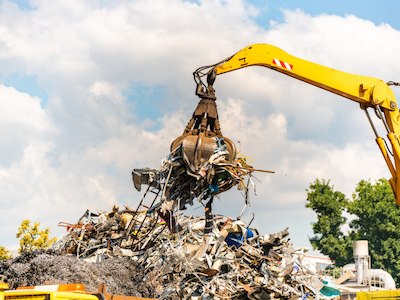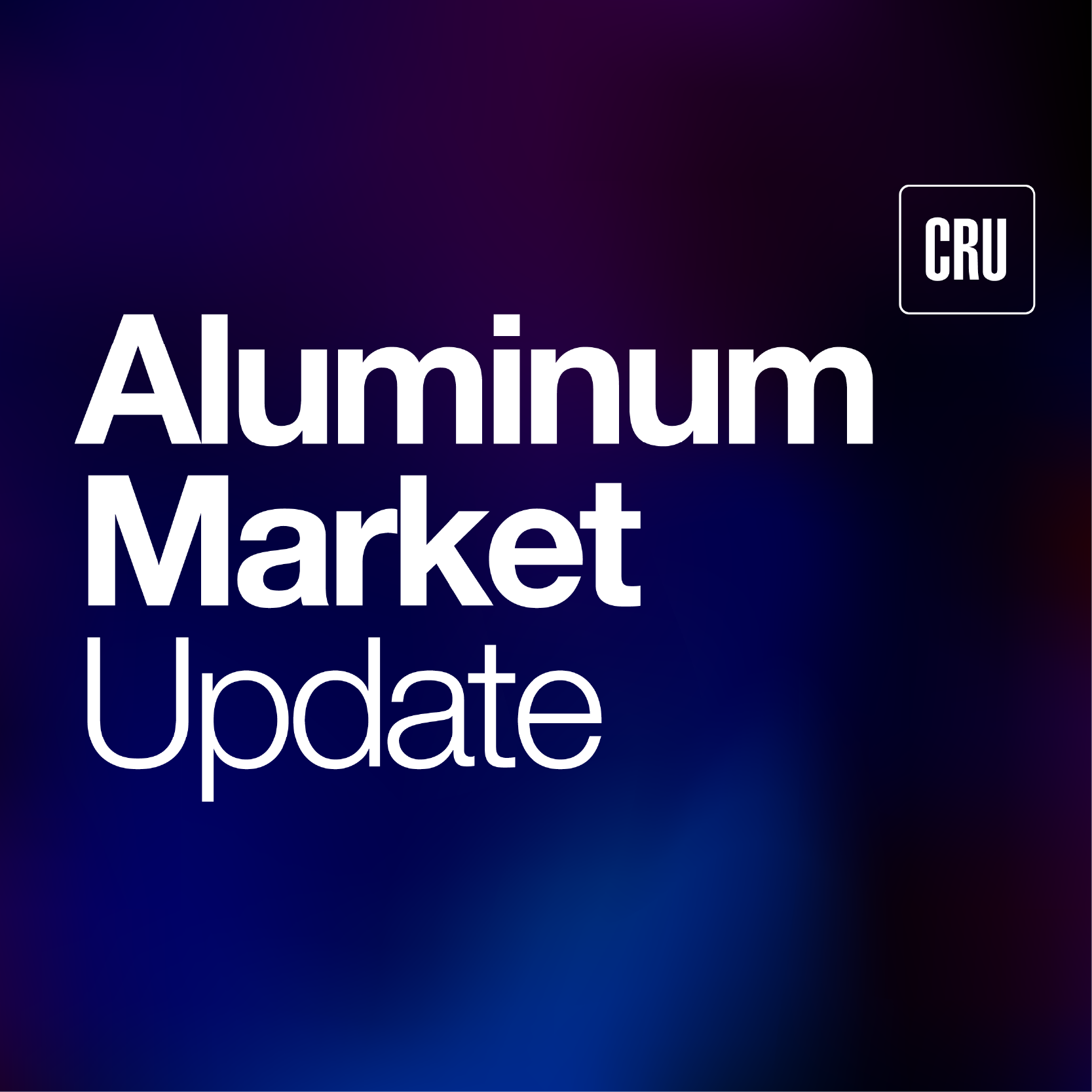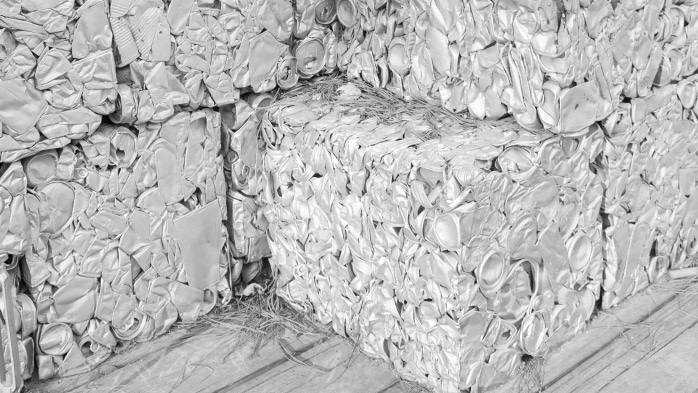Aluminum Scrap Markets

June 27, 2025
Can scrap justify trading at a premium to primary metal?
Written by Greg Wittbecker
A prominent trade analyst has recently declared that recycled aluminum, or scrap to us traditionalists, could be poised to trade at a premium to primary aluminum in the U.S. during 2025 and 2026.
The logic behind this bold statement is grounded in the following:
- Primary metal supply in North America is very tight and increasingly expensive.
- Demand for scrap is rising in response to the high cost of primary metal, as consumers naturally attempt to substitute away from it.
- Demand for lower-carbon, higher-recycled content in fabricated products will also drive demand for recycled metal.
Let’s break these arguments down and test their credibility.
Primary metal supply is tight and getting more expensive.
Structurally, the U.S. has been in deficit for a long time and that’s unlikely to change. Despite the current 50% Section 232 tariffs, the hoped-for restart of idle capacity won’t be coming soon. We’ve talked about that at length.
The reality is that competitive power is lacking to justify restart, and even if we restarted 100% of our idled capacity, we would remain in a big deficit. That number would still be around 3.8 million metric tons.
The 50% tariff is designed to stimulate capacity, and there is some hope on the horizon. EGA’s ~600,000 ton/year Oklahoma smelter project has promise. They have the capital, technological know-how and expertise in building and operating in-situ gas-generated electricity. They might pull it off.
However, given the way we build in the World compared to China, this could be 2030 before this supply hits the market. That would still leave the U.S. with a deficit of 3.2 million tons.
So clearly, the argument that primary supply is tight is valid. The question then is: how does the market price clear this problem, and is scrap substitution part of the solution?
The answer to this is the same answer we have always had for covering all deficit situations: pushing primary physical premiums (expressed over the London Metal Exchange (LME) price) to levels that attract sufficient imports to balance the market. The tail (scrap) won’t wag the dog (primary) when it comes to solving the metal deficit.
Demand for scrap is rising in response to the high cost of primary metal, as consumers naturally attempt to substitute away from it.
In every major cycle where primary metal prices have risen, whether due to LME spikes or high regional physical premiums, we have seen consumers becoming increasingly creative in how they use and source different types of scrap.
This trend started in the late 1980’s when the LME set its all-time highs above $4,200 per ton. Since then, we’ve seen wave after wave of new production scrap become a fixture in rolling, extrusion, high-grade foundry alloys, and forgings. Today’s environment is one in which a finite amount of new production supply is being chased by more buyers.
It is fair to say that all new production scraps is being recovered and consumed by the market. You “cannot squeeze blood out of a rock” – bidding more for new production scrap won’t create more supply. It’s correlated to industrial production and how busy rolling mills, extruders, and foundries are in making new products.
What is true is that to avoid high primary metal expense, individual buyers may bid up new production scrap prices if the scrap-to-primary discount is attractive. This is where metallurgy 101 comes into play and sets practical limits on the market’s willingness to pay more for scrap.
Melt Loss Matters
Anyone who’s spent any time in the recycling business knows that different grades of scrap yield different recoveries when remelted. This is called melt loss. Used beverage containers (UBC) typically lose about 12% of their gross weight in processing. Segregated, clean alloys can lose 4-5% of weight.
This melt loss is embedded in the intrinsic value of scrap when savvy buyers bid for it.
For example, if primary metal is worth $1.00 per pound, and a buyer is interested in purchasing UBC, they know that at par value to primary metal, UBC will cost them $0.12 per pound in metal recovery, because = $1.00 x 12%. This means the breakeven point for UBC is 88% of Midwest Primary based on melt loss= $0.88 per pound.
In addition to melt loss, buyers must account for the incremental processing costs of buying and melting UBC versus using primary metal. This could be 4-5% or $0.04-0.05 per pound, using our example. This would further reduce the breakeven point to $0.83-0.84 per pound or an 83-84% buying spread.
In Q1 2025, we saw a sharp escalation in UBC prices due to seasonal tightness and a few mills chasing what was available. UBC prices were bid up to 84% of Midwest transaction price, then abruptly fell.
The smart buyers realized that bidding 84% was untenable, and there were no savings relative to primary metal. UBC buying spread dropped to 70-72% and fell even further recently into the 60% range.
Over time, melt loss must always be factored into breakeven scrap valuations.
What Exceptions Could Force Scrap to Trade at a Premium to Primary?
People have increased their use of scrap for many years due to its inherent discount to primary (net of melt loss). Another benefit of using scrap metals has been the ability to get “free” alloying elements in the deal. Some good examples of this are:
- Post-consumer A356 wheels, which contain 7% silicon. Many consumers buy wheels simply for silicon addition.
- Class II scrap, or 5xxx series end and tab scrap, which affords rolling mills a source of magnesium.
When silicon and magnesium prices get very high, scrap recovery can be cheaper than buying pure, virgin alloy. Right now, it’s a mixed bag. Primary silicon is $1.35 per pound in the U.S. Primary magnesium is $3.25 per pound. There’s zero incentive to pay up for high-silicon-bearing alloys when it is trading at a discount to primary aluminum.
Select magnesium consumers making 5xxx alloys, like end/ tab stock or 5052 distributor alloys, might justify pushing Class II or 5052 segregated prices to or above primary, but it is wholly dependent on their access to can manufacturer and OEM scrap in the 5052 market.
So far, the supply appears adequate to prevent Class II or 5052 scrap from rising to parity with primary metal prices.
Demand for lower-carbon, higher-recycled content in fabricated products will also drive demand for recycled metal.
The Influence of Low Carbon Footprints and High Recycled Content
Another factor that could push scrap to trade at or above parity to primary metal is consumer demand high-recycled, low-carbon content.
The trend matters more in Europe, where Carbon Border Adjustment Mechanism (CBAM) will take effect in 2026. Products with >4-5 tons of CO2 per ton of metal could be taxed based on emissions.
Right now, that cost is around $82 per ton or $0.04 per pound, incentivizing buyers to use more scrap to reduce carbon intensity.
The value of scrap metal in Europe will be correlated to the value of emission allowances and could justify prices above primary.
Today, low-carbon primary aluminum in Europe trades at $10-20 per ton over higher-carbon product. The premium effectively raises the breakeven threshold for scrap as a percentage of high-carbon primary aluminum prices, which would allow scrap to trade at a premium to high carbon primary.
Different Story in North America
The U.S. market isn’t there yet. While Alcoa, Hydro, and Rio Tinto are pushing low-carbon metal, consumer willingness to pay a premium is limited.
U.S. consumers tend to “want their cake and eat it too” – they want low-carbon primary aluminum, but not the added cost.
Their logic is twofold: First, jaded consumers see Canadian low-carbon metal as the same metal they’ve bought for 100 years. It is still made from the same process, only now producers are rebranding it to seek a premium.
So far, the reception has been cool. What might change that debate is when Canadian producers have to reinvest in their assets to keep producing that same low-carbon metal.
For example, Rio Tinto just announced a $1.2 billion capex program to upgrade their Isle Maligne, Quebec hydropower stations. That investment must be justified in some way, and earning a higher premium for the resulting low-carbon aluminum might be a justification.
Alcoa and Alouette also face pressure in the form of rising hydro power costs once long-term contracts expire later this decade – another area of vulnerability.
Carbon Accounting in Secondary Products Could Force the Issue of Scrap Premiums
There is raging debate in the industry over how to account for carbon in scrap. Purists say that only post-consumer grades can truly claim low-carbon status, while new production scrap could be tainted by the percentage of primary metal content contained.
Primary metal content in scrap can amount to:
- 4 tons of CO2 (Canadian-origin)
- 8 tons of CO2 (Middle East-origin
- As high as 16 tons of CO2 (Australian-, Indian-, or South African-origin)
Purists contend that only post-consumer scrap usage can truly claim carbon contents of 1 ton of CO2 or less.
The problem there, however, is supply.
Post-consumer scrap supply, like pre-consumer scrap supply, is not very responsive to price signals.
No one knocked down a building to recover the structure’s obsolete windows or doors. Similarly, trucks, rail cars, or power lines are leaving service because someone bid up the market for end-of-life vehicle scrap. Most obsolete scrap is a “slave to its’ lifecycle”, which could range from 12 to 50 years.
Zorba and Twitch to the Rescue, But at What Price?
Zorba and twitch – co-products of shredded light vehicles – come to market at around 12 years of age. Historically, the resulting mixed alloy has gone either to domestic die-casters offshore to China or India. Now, market participants are looking to zorba and twitch to supplement the increasing demand for post-consumer scrap.
The challenge is to effectively segregate zorba into fractions of wrought fractions for rolling mills and extruders. Sources suggest that only about 30% of the zorba going through sortation will be suitable for these sectors, as the remaining 70% is comprised of high-silicon/high-magnesium castings earmarked for the die-cast market.
Trade commentary suggests the diecast market really doesn’t want this casting scrap, due to the melt loss associated with high magnesium alloys. That translates into even greater discounts for that material….and means correlative 30% fraction of wrought alloys must compensate for the diminishing value of the casting scrap mixed into zorba lots. If rolling mills and extruders pay more, this also could push prices toward parity with primary metal.
Why This Matters
The analyst comments that scrap could go to a premium over primary metal, which caused a stir. Our take on this is that the concern is premature:
- U.S. primary deficits will command high premiums to attract imports, indexed to prevailing duties.
- These elevated primary premiums allow scrap to trade at discounts.
- Melt loss considerations still govern breakeven points, and scrap should remain discounted as a result.
- Unless silicon and magnesium prices go crazy, no urgency will exist to pay up for alloy scrap.
- Unless U.S. consumer preferences shift, low-carbon premiums won’t be enough to push scrap above parity within 18 months.







